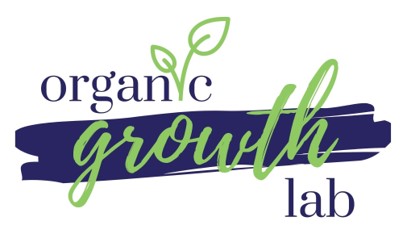You might not realize it, but the right SEO strategies can transform your SaaS product pages from hidden gems into top search results.
When you follow the advice in this guide, not only you can greatly improve visibility but you’ll be positioned to attract new buyers. We’ll examine key components for optimizing product pages and explore how they can collectively improve your SaaS product page performance.
Need some extra SEO help? Contact us today to learn how we help clients just like you explode their traffic organically.
Keyword Research for SaaS Product Pages
Keyword research is the foundation of effective SEO for SaaS product pages. When you investigate keyword opportunities, you’re tapping into the potential to attract your ideal customers.
Start by identifying industry-specific terms and understanding user search queries. This insight helps you align your content with what your audience is genuinely searching for, making your SaaS product pages more relevant and discoverable.
Using tools like SEMrush and Ahrefs will streamline this process. These platforms offer robust data on search volume and competition, allowing you to pinpoint the most valuable keywords for your strategy.
Targeting long-tail keywords is pivotal here. They might not necessarily have massive search volumes, but they attract highly qualified leads who are closer to making a purchasing decision. This targeted approach can notably improve your conversion rates, making your SEO efforts more efficient and rewarding.
Don’t overlook the power of competitor keywords. By analyzing what keywords your competitors are ranking for, you can uncover market trends and identify keyword opportunities that you might’ve missed. This competitive analysis is a goldmine for your SaaS SEO strategy, giving you an edge in the crowded market.
Incorporating a mix of informational, transactional, and navigational keywords ensures that you cover different stages of the buyer’s journey. This all-encompassing approach helps guide potential customers from awareness to decision, making your SaaS product pages a valuable resource throughout their journey.
Optimizing Meta Tags

Once you’ve identified your target keywords, the next step is to optimize your meta tags to help search engines and users easily understand and find your SaaS product pages.
Meta tags, including title tags and meta descriptions, play a pivotal role in on-page SEO, making your SaaS product pages more visible and enticing to click on.
First, let’s focus on title tags. These should be under 60 characters to make sure they display fully in search results. It’s vital to include primary keywords close to the beginning.
A well-crafted title tag not only improves search engine rankings but also increases your click-through rates by making your titles more compelling.
Next, consider your meta descriptions. These should be engaging, concise (under 160 characters), and include a call-to-action that prompts users to click through to your page.
An optimized meta description not only helps search engines understand the content but also entices users to explore your SaaS product pages further.
Here’s a quick reference table to guide you:
| Element | Character Limit | Best Practices |
|---|---|---|
| Title Tags | Under 60 characters | Include primary keywords early, keep it clear |
| Meta Descriptions | Under 160 characters | Be compelling, add a call-to-action, use keywords |
| Meta Tags Overall | N/A | Ensure relevance and clarity for SEO |
Optimizing these meta tags is a simple but powerful way to make sure your SaaS product pages are easily discoverable and appealing. By focusing on these small yet significant elements of on-page SEO, you’re taking a critical step towards liberating your product from the sea of competitors and making it stand out to potential customers.
Compelling Product Descriptions

Crafting effective product descriptions is key to capturing your audience’s attention and driving conversions.
When you create detailed and unique product descriptions, you’re not just filling space; you’re improving your SEO rankings and increasing user engagement. By integrating relevant keywords into your descriptions, you enhance your product’s visibility on search engines, making it easier for potential customers to find you.
However, it’s not just about adding keywords. Your product descriptions should be clear and concise, helping users quickly understand the value of your SaaS product.
Your description should clarify and guide your audience toward an informed purchasing decision. Highlight the unique features and benefits that set your product apart. Use straightforward language that resonates with your audience’s needs and desires.
Consider focusing on:
- Functionality: Clearly describe what the software does, including its primary functions and capabilities. For example, if it’s a project management tool, mention task management, time tracking, and team collaboration features.
- Ease of Use: Highlight user-friendly interfaces and ease of navigation. Mention any drag-and-drop features, customizable dashboards, or simple setup processes.
- Integration Capabilities: Discuss how the software integrates with other tools and platforms that the target audience is likely using, such as CRM systems, email marketing tools, and other business software.
- Automation: Detail any automation features that save time and reduce manual tasks, such as automated workflows, email sequences, and reporting.
- Improved Efficiency and Productivity: Explain how the software helps users complete tasks faster and more efficiently, leading to increased productivity.
- Cost Savings: Highlight any cost-saving benefits, such as reducing the need for multiple tools or lowering operational costs through automation.
- Scalability: Discuss how the software can grow with the user’s business, accommodating more users, data, or complex needs as the company expands.
- Data Security: Reassure potential customers about the security measures in place to protect their data, including encryption, compliance with industry standards, and regular updates.
Optimizing your product descriptions with elements such as bullet points and headers can further improve readability and user experience. People prefer clarity and simplicity over lengthy text. Bullet points break down information into digestible chunks, making it easier for users to scan and understand quickly.
Visual Elements for SaaS Product Pages

Integrating visual elements like high-quality images and videos into your product descriptions can significantly increase user engagement and make your SaaS product more appealing.
By incorporating these elements into your product pages, you allow visitors to experience your solution in a more dynamic and interactive way, moving beyond the monotony of text-heavy content.
High-quality images can showcase your product’s interface, giving potential customers a clear view of what they’ll be using. Crisp, clean visuals not only improve aesthetic appeal but also communicate professionalism and reliability.
Videos bring your product to life. Demos and tutorials allow users to see the software in action, making it easier for them to understand its functionality and benefits.
Interactive elements like clickable demos and infographics transform passive browsing into an engaging experience. They invite users to explore features and interact with the product in real-time. This hands-on approach can make complex SaaS solutions more accessible and understandable.
Data visualizations, such as charts and graphs, can further enhance your product’s credibility. They provide a concrete, visual representation of your software’s capabilities and its impact on a user’s workflow or business outcomes. These visuals can simplify complex data, making it more digestible and persuasive.
Customer Testimonials
Why do customer testimonials play such a pivotal role in boosting conversions on your SaaS product pages?
Imagine browsing for a new software solution and stumbling upon glowing reviews from real users who’ve solved the same problem you’re facing
Customer testimonials are more than just words—they’re powerful trust signals that can transform a casual visitor into a loyal customer.
92% of consumers read online reviews before making a purchase decision. By showcasing customer testimonials on your SaaS product pages, you’re leveraging this behavior to your advantage. Testimonials build credibility and trust, two critical components that can increase conversions by up to 34%.
When potential customers see that others have had positive experiences with your product, they’re more likely to feel confident in making a purchase.
Addressing common objections is another strategic benefit of featuring customer testimonials. Specific endorsements can directly speak to the concerns or reservations potential buyers might have. For instance, a testimonial that highlights exceptional customer support can reassure those wary of post-purchase service.
If you can include data or metrics in these testimonials, even better. Tangible evidence of benefits, like “productivity increased by 50%,” provides undeniable proof of your product’s value.
Moreover, if your testimonials come from well-known brands or influencers, you’re not just building trust—you’re skyrocketing your credibility. People are more likely to trust endorsements from recognized names, making your SaaS product pages even more compelling.
Case Studies
Including case studies on your SaaS product pages can significantly increase conversions by showcasing real customer success stories. These narratives are powerful tools that build credibility and trust in your product. When potential customers see others achieving tangible results, they are more likely to envision similar success for themselves.
To maximize the impact of your case studies, incorporate data-driven results and specific metrics. Highlighting how a customer increased productivity by 50% or saved thousands of dollars due to your solution makes the benefits clear and compelling. Numbers don’t lie, and they provide the solid evidence needed to persuade even the most skeptical prospects.
Don’t forget the importance of A/B testing different case study formats. Maybe a detailed, long-form story works best for your audience, or perhaps a concise, bullet-point summary grabs more attention. Testing various layouts, tones, and elements will help you identify the most effective presentation style for driving conversions.
Optimizing the titles and meta descriptions of your case studies for relevant keywords is another essential step. This not only helps your case studies rank higher in search engine results but also attracts the right audience right from the get-go.
Incorporating case studies that showcase real-world success will elevate your SaaS product page. By demonstrating tangible results and optimizing for search visibility, you’ll build credibility and drive higher conversions.
Bringing it All Together
Implementing these SEO strategies builds a solid foundation for long-term growth. Not only can you increase your brand’s visibility, you can attract prospective customers who are ready to buy.
With targeted keywords, optimized meta tags, alluring descriptions, engaging visuals, and authentic testimonials, your conversions will naturally soar.
Want to learn more? Contact us today to explore how SEO can grow your SaaS company exponentially.



